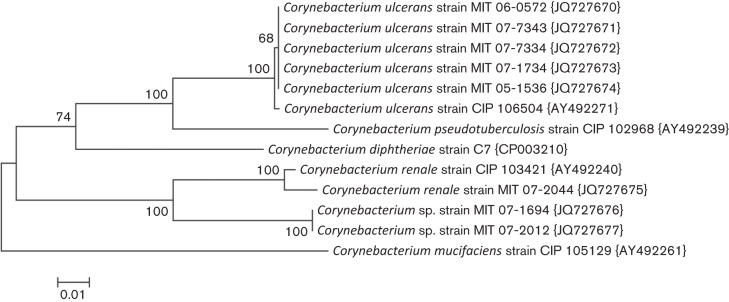Fig. 2.
Evolutionary relationships of Corynebacterium based on the rpoB sequences. The evolutionary history was inferred using the neighbor-joining method (Saitou & Nei, 1987). The optimal tree with the sum of branch length = 0.44347215 is shown. The percentage of replicate trees in which the associated taxa clustered together in the bootstrap test (1000 replicates) is shown next to the branches (Felsenstein, 1985). The tree is drawn to scale, with branch lengths in the same units as those of the evolutionary distances used to infer the phylogenetic tree. The evolutionary distances were computed using the Jukes–Cantor method (Jukes & Cantor, 1969) and are in the units of the number of base substitutions per site. The analysis involved 13 nt sequences. All ambiguous positions were removed for each sequence pair. There were a total of 369 positions in the final dataset. Evolutionary analyses were conducted in mega5 (Tamura et al., 2011).

